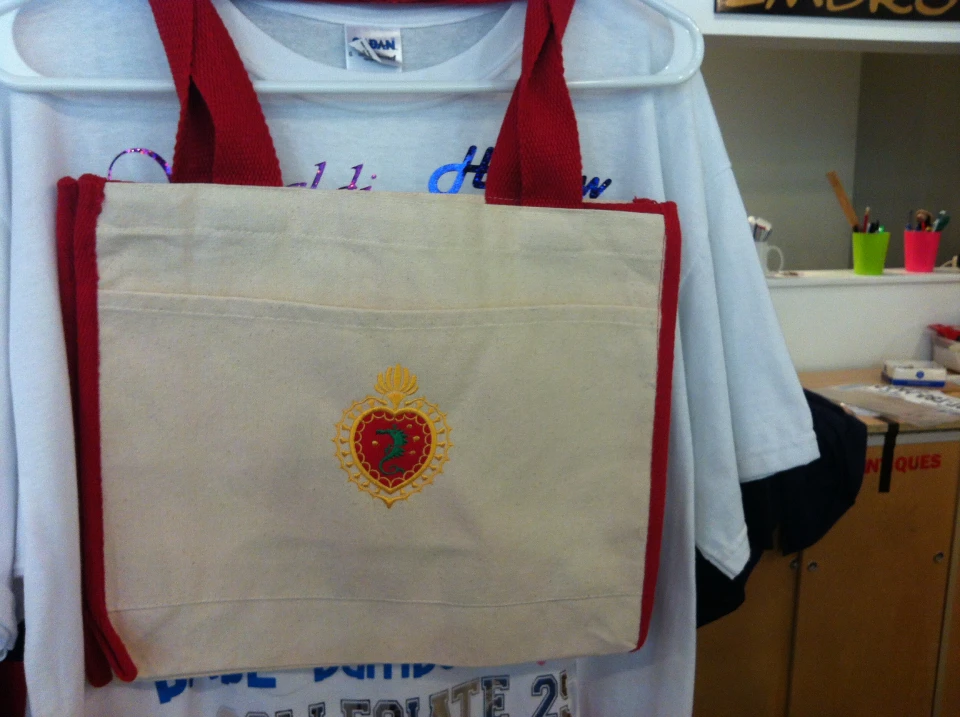Personalized Mugs with Customized Embroidery Layouts for an Unique Gift
Personalized Mugs with Customized Embroidery Layouts for an Unique Gift
Blog Article
The Art of Custom Embroidery: Unlocking the Secrets to Creating One-of-a-kind and Unforgettable Styles
The tricks to producing personalized needlework designs that astound the eye and leave a long-term impression lie in a fragile equilibrium of technique, creative thinking, and interest to information. As we dig into the globe of custom needlework, we uncover the nuanced interaction in between thread option, sew complexity, and style personalization that boosts a mere garment to a work of art.
Selecting the Right Embroidery Threads
When selecting embroidery threads, what vital aspects should you take into consideration to ensure the best outcomes for your custom styles? The selection of needlework string is important in determining the final outcome of your embroidered style.
Thicker threads can include dimension and appearance to your style, while finer threads are optimal for intricate information and tiny text. Additionally, thinking about the shade fastness and washability of the thread is vital to guarantee that your custom designs preserve their top quality and vibrancy over time.
Exploring Various Stitch Strategies
To delve right into the realm of 'Exploring Different Stitch Techniques', one should understand the complexities and subtleties that each sewing technique brings to the art of embroidery. Various stitch strategies not just include aesthetic passion however likewise add to the general texture and measurement of the style. One popular stitch technique is the satin stitch, which includes very closely jam-packed parallel stitches to create a smooth and shiny surface area, suitable for filling in forms and producing vibrant lays out.
On the other hand, the backstitch is a functional technique commonly used for outlining and adding fine details. It entails stitching backwards to create a solid line of needlework. Furthermore, the French knot stitch includes a tactile aspect to layouts, ideal for producing distinctive accents like blossom facilities or attractive touches.
Checking out different stitch strategies permits embroiderers to play with light, shadow, and deepness within their designs, raising the aesthetic allure and creative quality of their embroidery tasks. By mastering different stitching methods, one can unlock limitless possibilities for creating one-of-a-kind and memorable personalized needlework pieces.
Incorporating Personalized Layout Aspects
Having discovered the complexities of different stitch techniques such as the satin stitch, backstitch, clothing tailor near me and French knot, the emphasis now shifts in the direction of including personalized design aspects in custom embroidery jobs. Individualized layout components play a critical duty in making needlework jobs genuinely special and memorable. One method to integrate personalization is by including initials, names, or substantial dates to the design. This not only includes a personalized touch but likewise improves the nostalgic value of the needlework item.
An additional method to integrate personalized style elements is by consisting of signs or themes that hold unique meaning to the recipient or mirror their interests and character. Incorporating a favorite flower, pet, or hobby-related symbol can make the embroidery layout a lot more significant and tailored. Additionally, picking colors that resonate with the recipient or line up with the desired theme can better enhance the customization of the needlework task.
Understanding the Art of Color Sychronisation
One key aspect of color sychronisation is comprehending shade concept. This consists of understanding how different colors connect with each other, the feelings they share, and this website just how they can be combined to create aesthetically attractive styles. By using shade concept concepts, embroiderers can create unified shade palettes that improve the general appearance of the layout.
Furthermore, taking notice of comparison is vital in color control. Making use of contrasting colors can assist particular aspects of the style pop, improve clarity, and develop a visually dynamic needlework piece. By understanding the art of shade control, embroiderers can raise their layouts and create memorable items that resonate with clients and audiences alike.
Enhancing Structure With Advanced Embroidery Stitches

Bullion knots, on the various other hand, can be used to produce twisted, ropelike elements that include a luxurious feel to the embroidery. Exploring with these innovative needlework stitches allows you to push the limits of traditional needlework and develop really distinct and visually appealing textures in your styles.
Final Thought
In verdict, the art of custom-made needlework includes a mix of selecting the ideal threads, exploring numerous stitch techniques, incorporating customized layout components, grasping shade control, and enhancing texture with sophisticated stitches. By recognizing and carrying out these essential aspects, company website embroiderers can produce unique and memorable designs that display their imagination and skill. Needlework lovers can unlock the secrets to producing beautiful and custom pieces that attract attention and leave a long-term perception.
Report this page